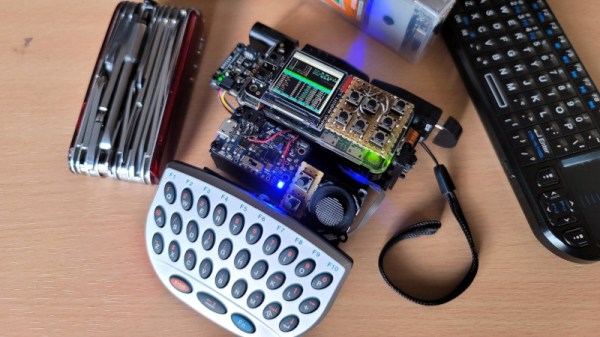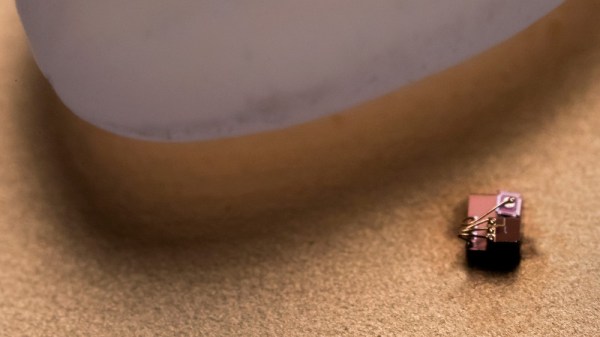The trend for cyberdecks has brought us many takes on the home-made portable computers, but it’s fair to say that some of them can be rather unwieldy. This is not an accusation you can point at [Smeef] with the Mini-Deck though, because its Raspberry Pi Zero, Adafruit miniature display, and tiny keyboard make the whole unit able to fit in the palm of a hand. We’re not sure we’ve seen one so compact!
The most obvious feature is the keyboard, it’s a DreamGear MiniKey miniature USB keyboard. It doesn’t have all the useful buttons a PC board has, so there’s also a separate set of buttons to cover those. Then there’s an analog stick connected to an Arduino Pro Micro that takes the functionality of a mouse, and an Adafruit Mini PiTFT 1.3″ Display. While a fully-functional display for the Pi, we do wonder if this tiny screen might actually be a bit too tiny to be practical. Power for the unit comes via an 18650 battery, which also functions as a pin for a folding mechanism.
The result is something that looks, feels, and works like a cyberdeck, but all in miniature. It might be a stretch to write a Hackaday piece on a machine like it, but we’re guessing that merely having built something like this is cool enough in itself. Certainly it’s considerably smaller than previous contenders for the smallest build.














